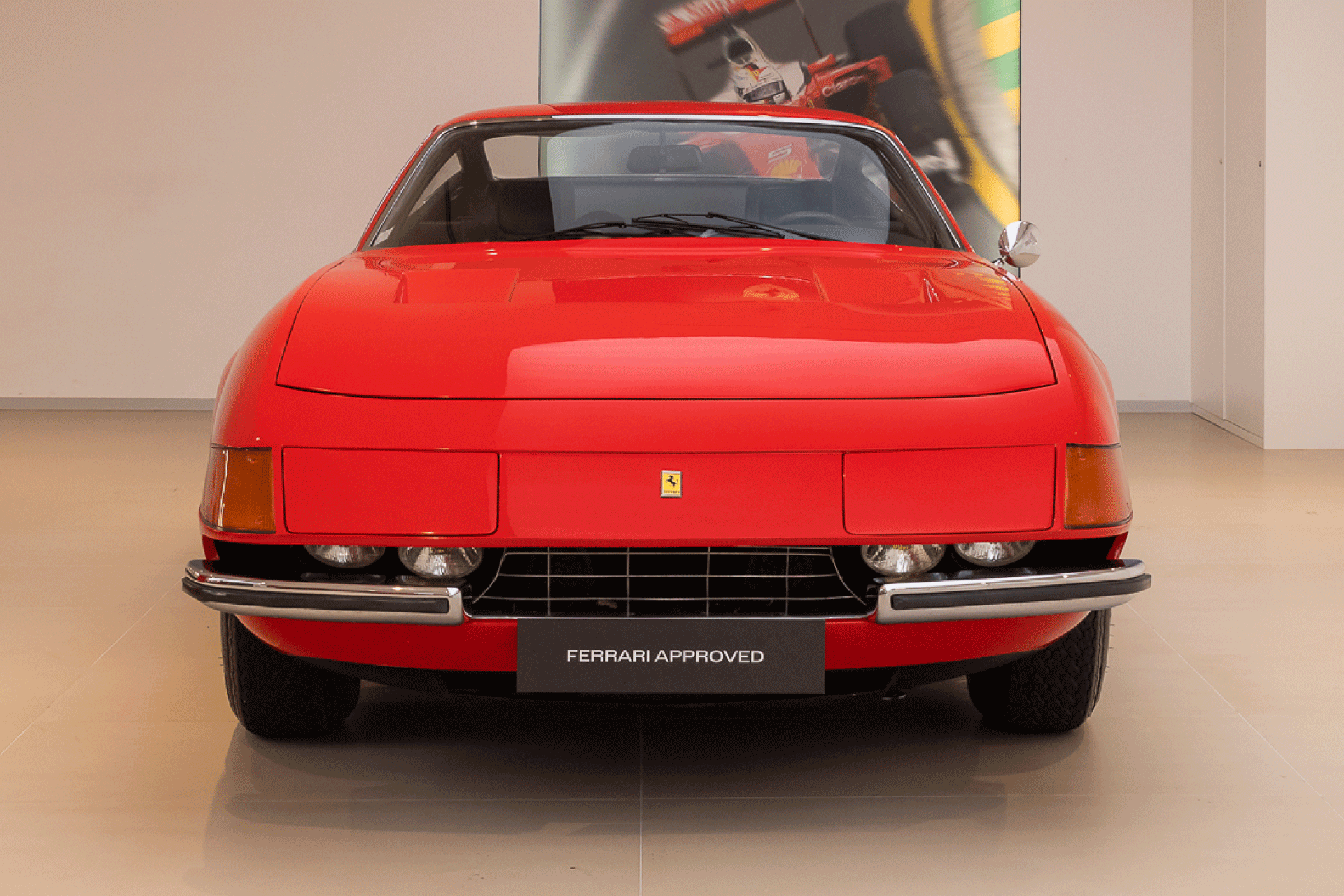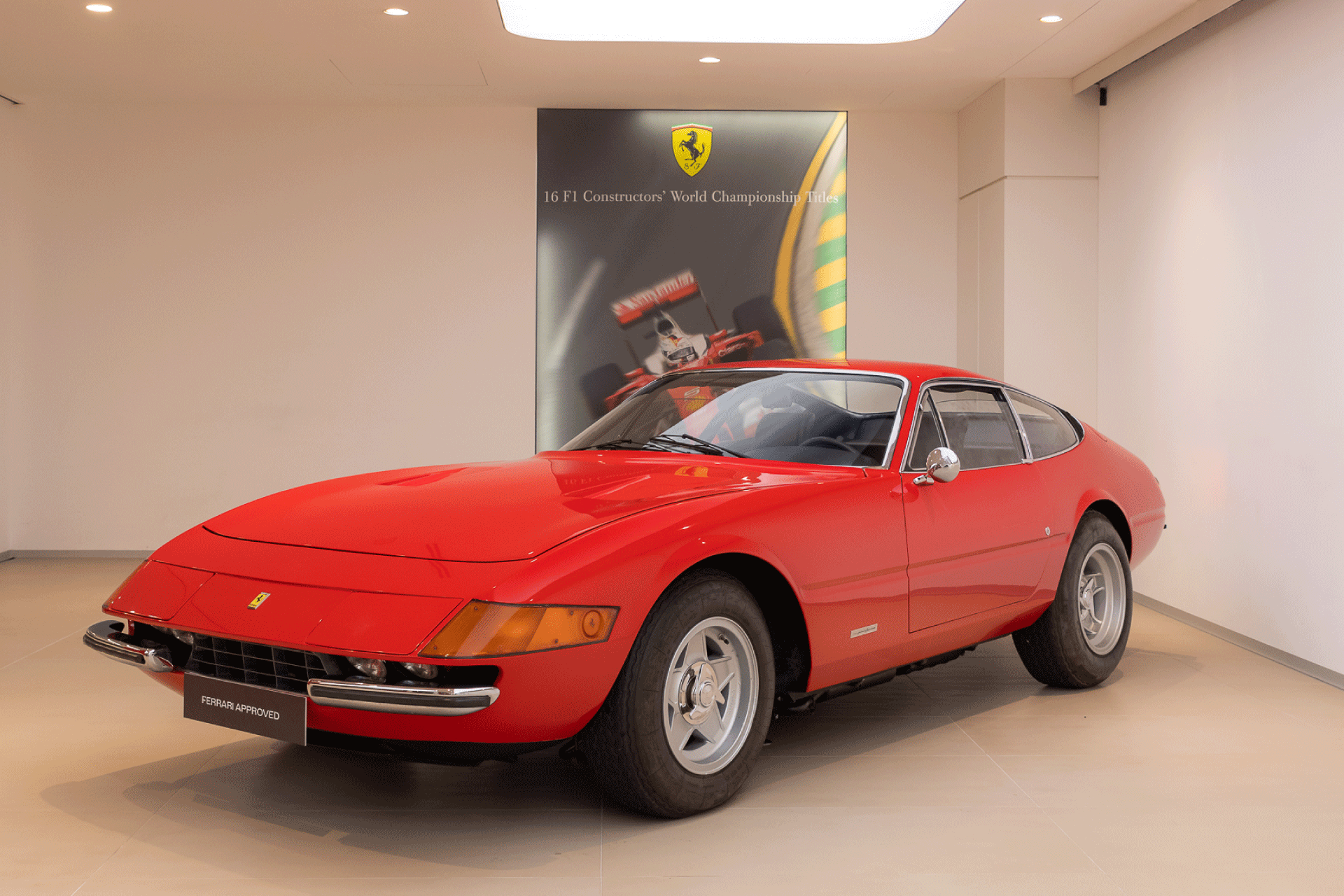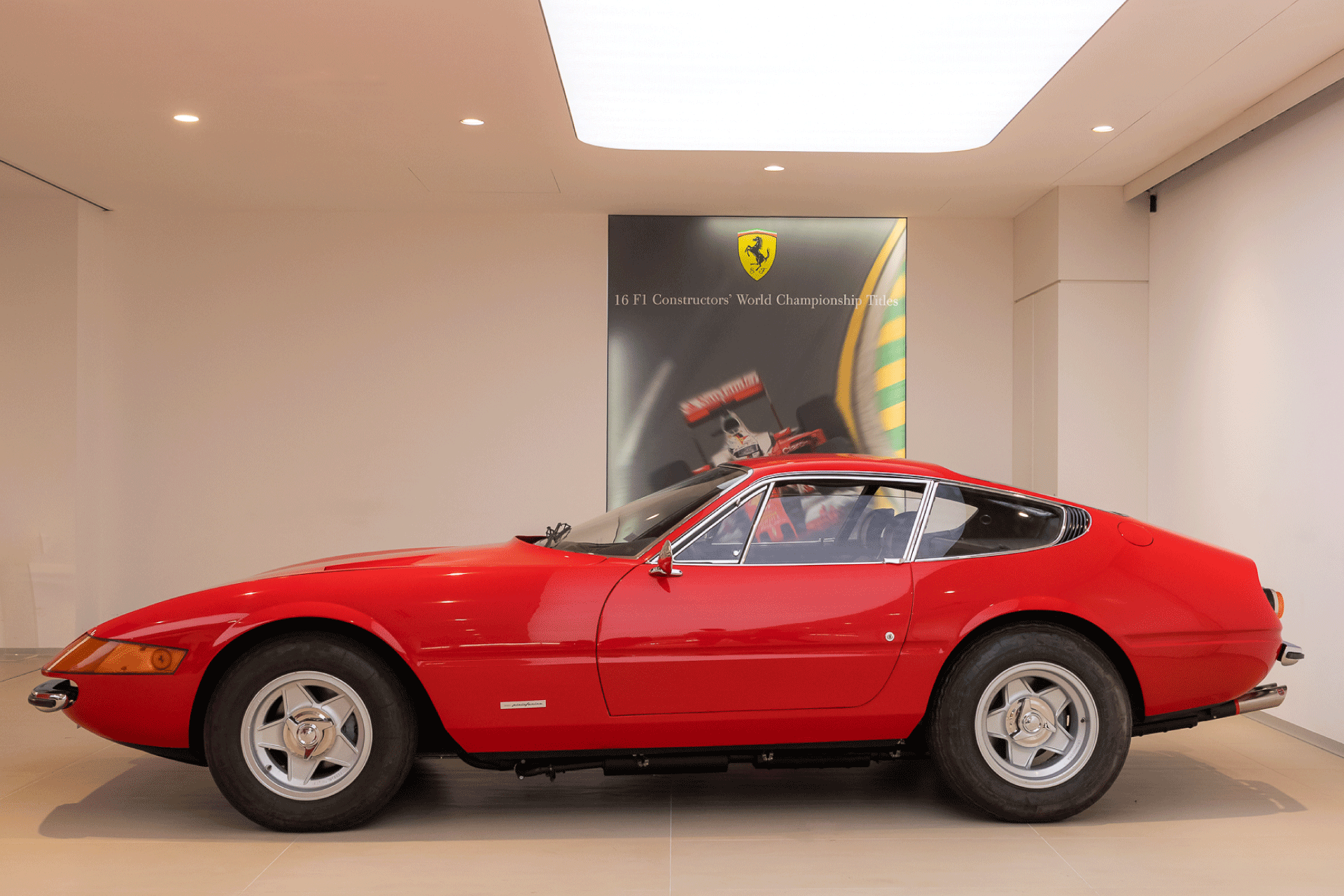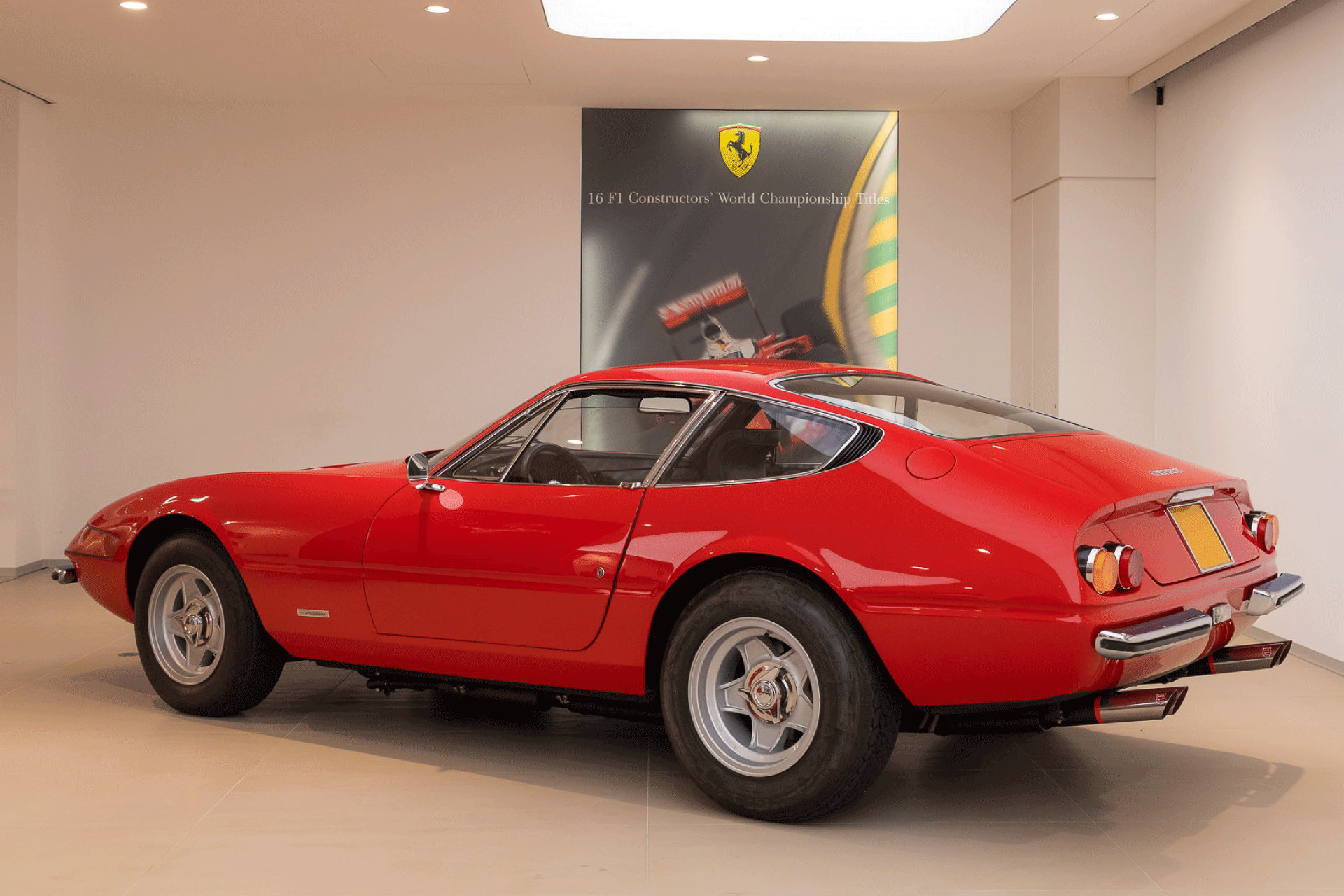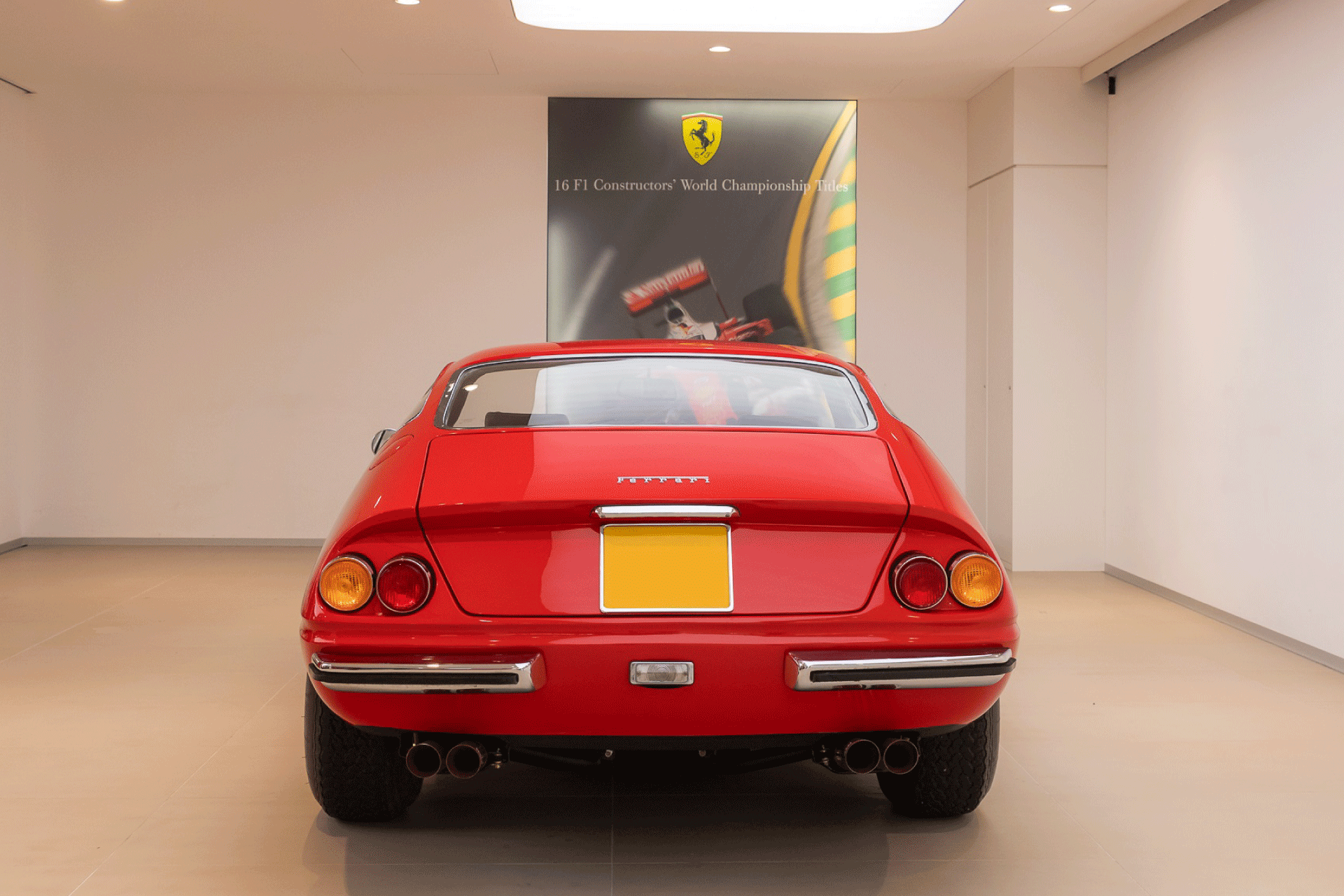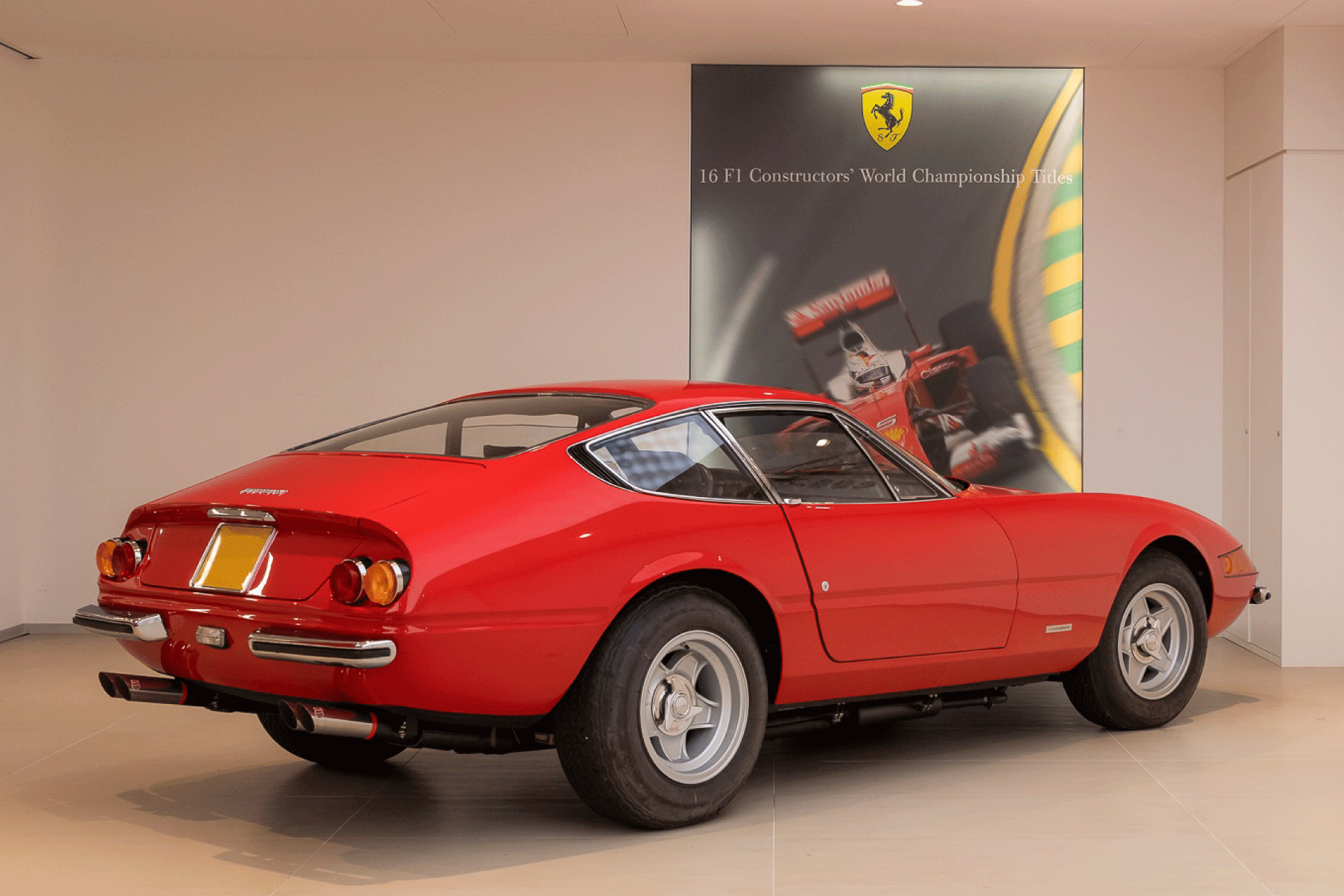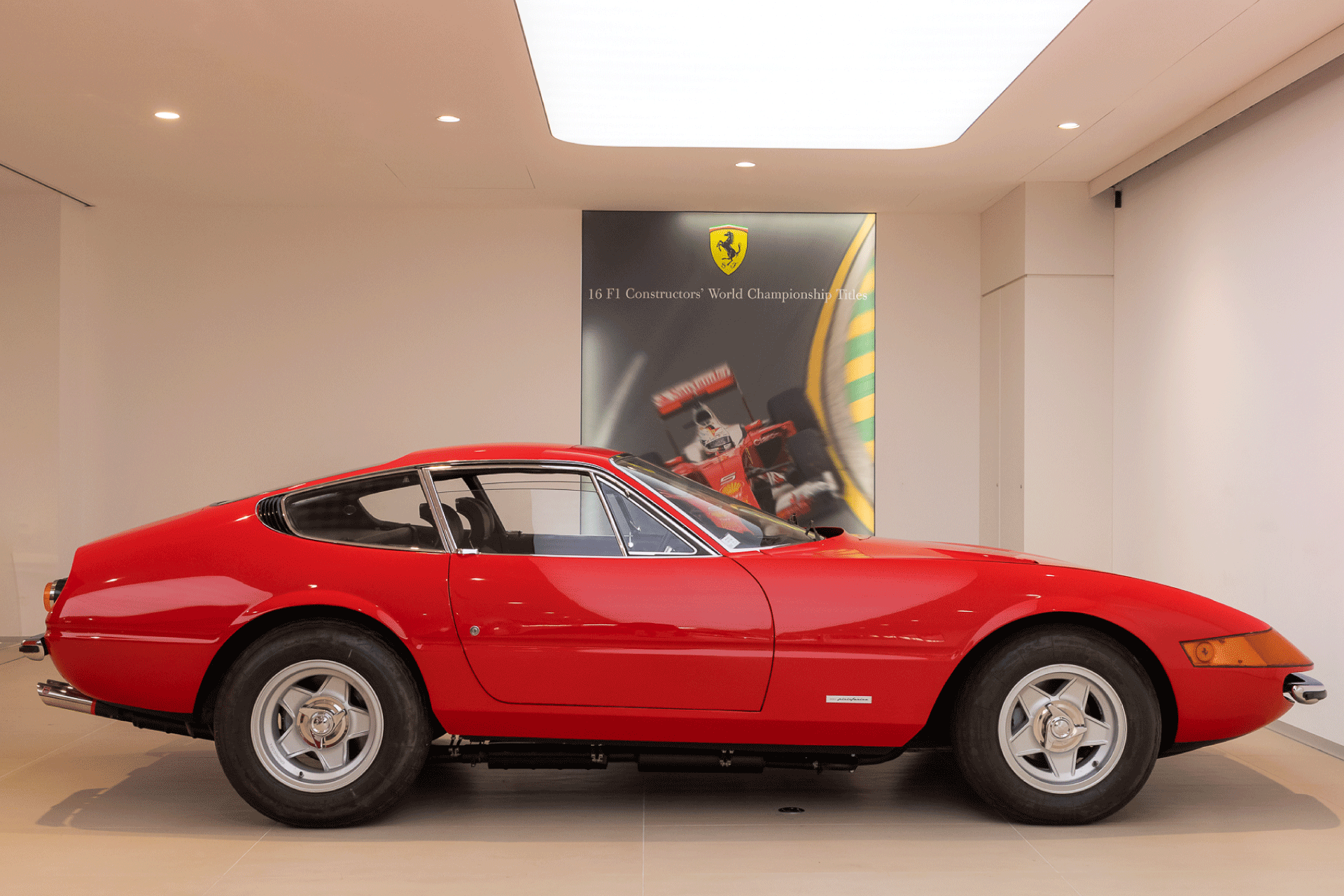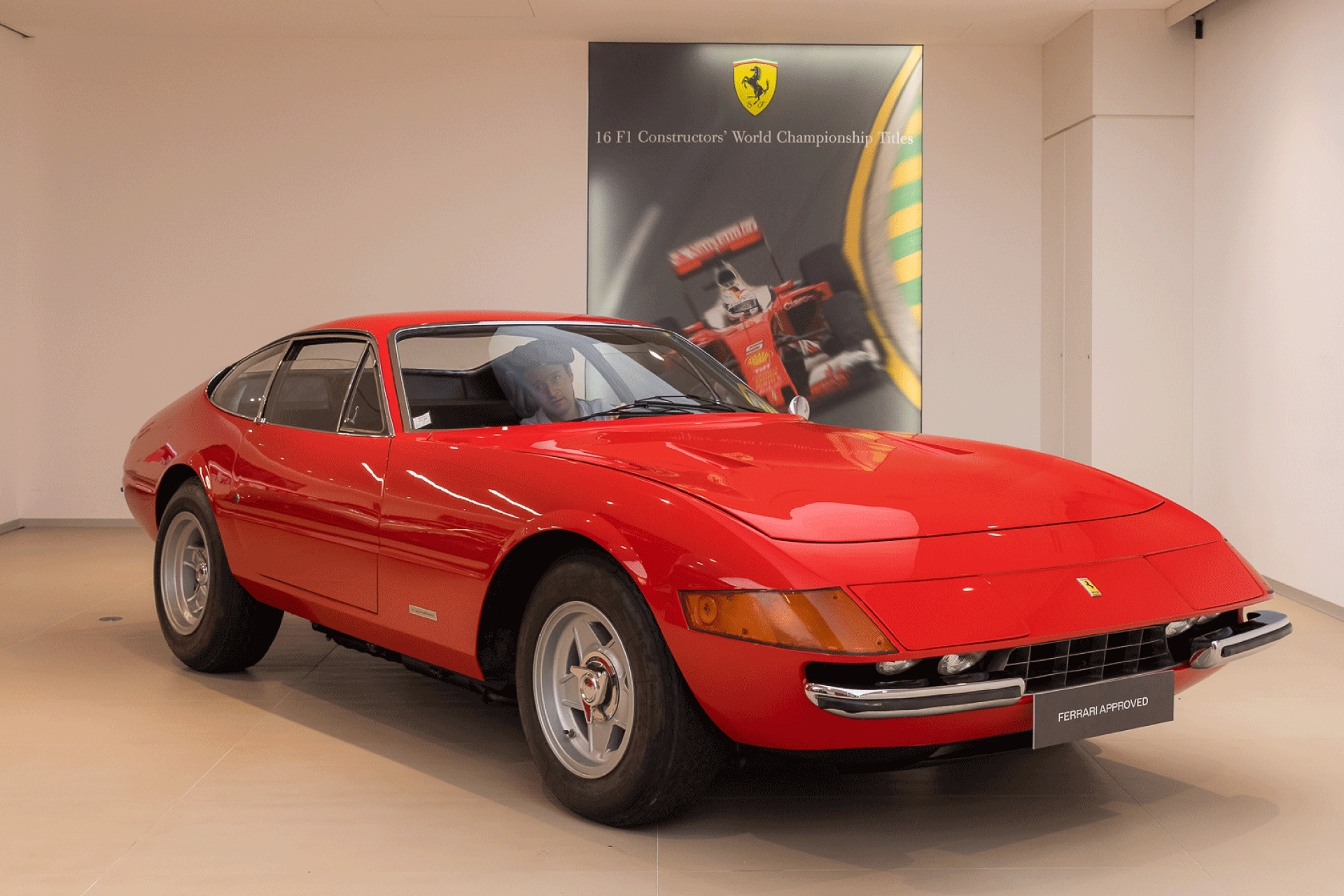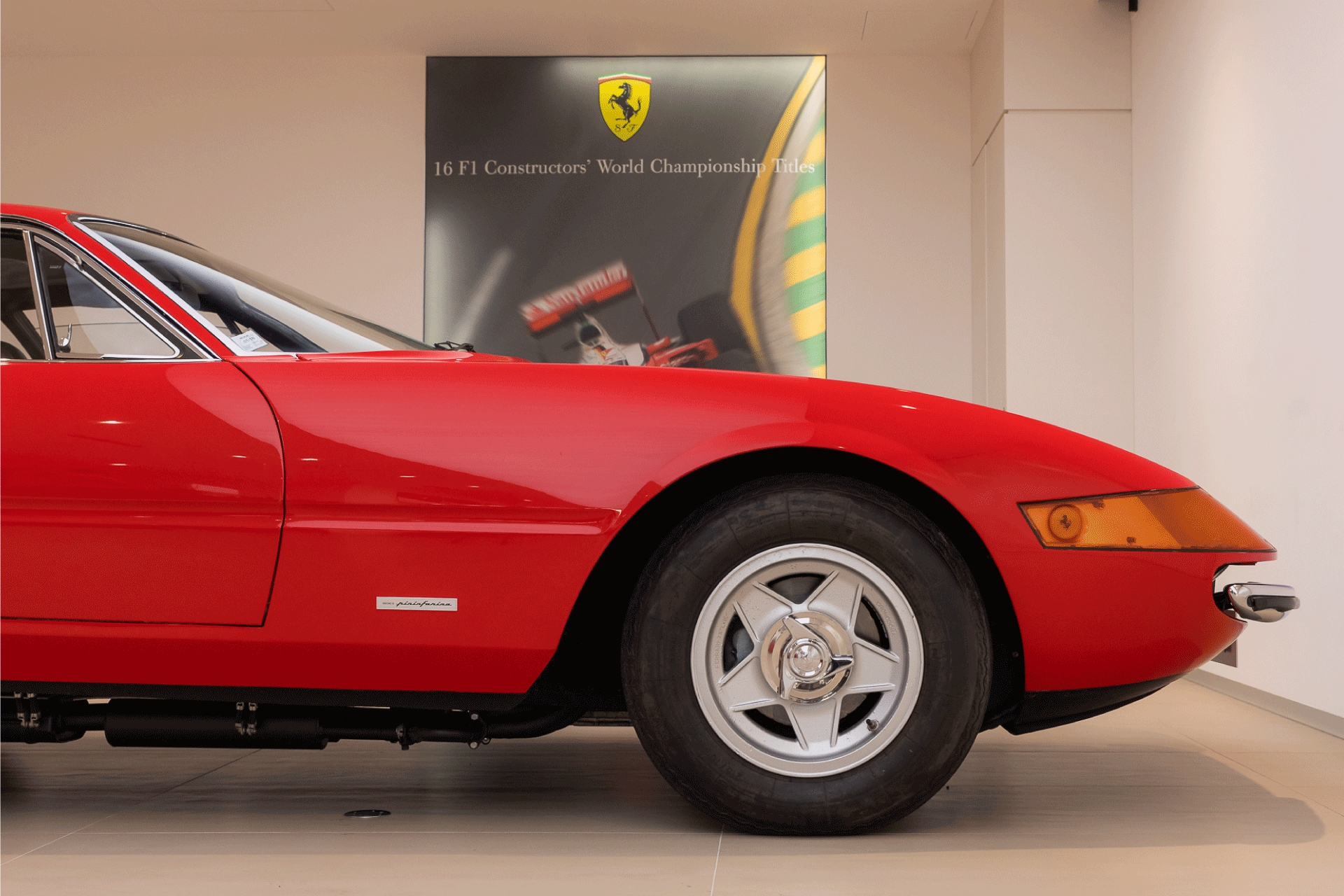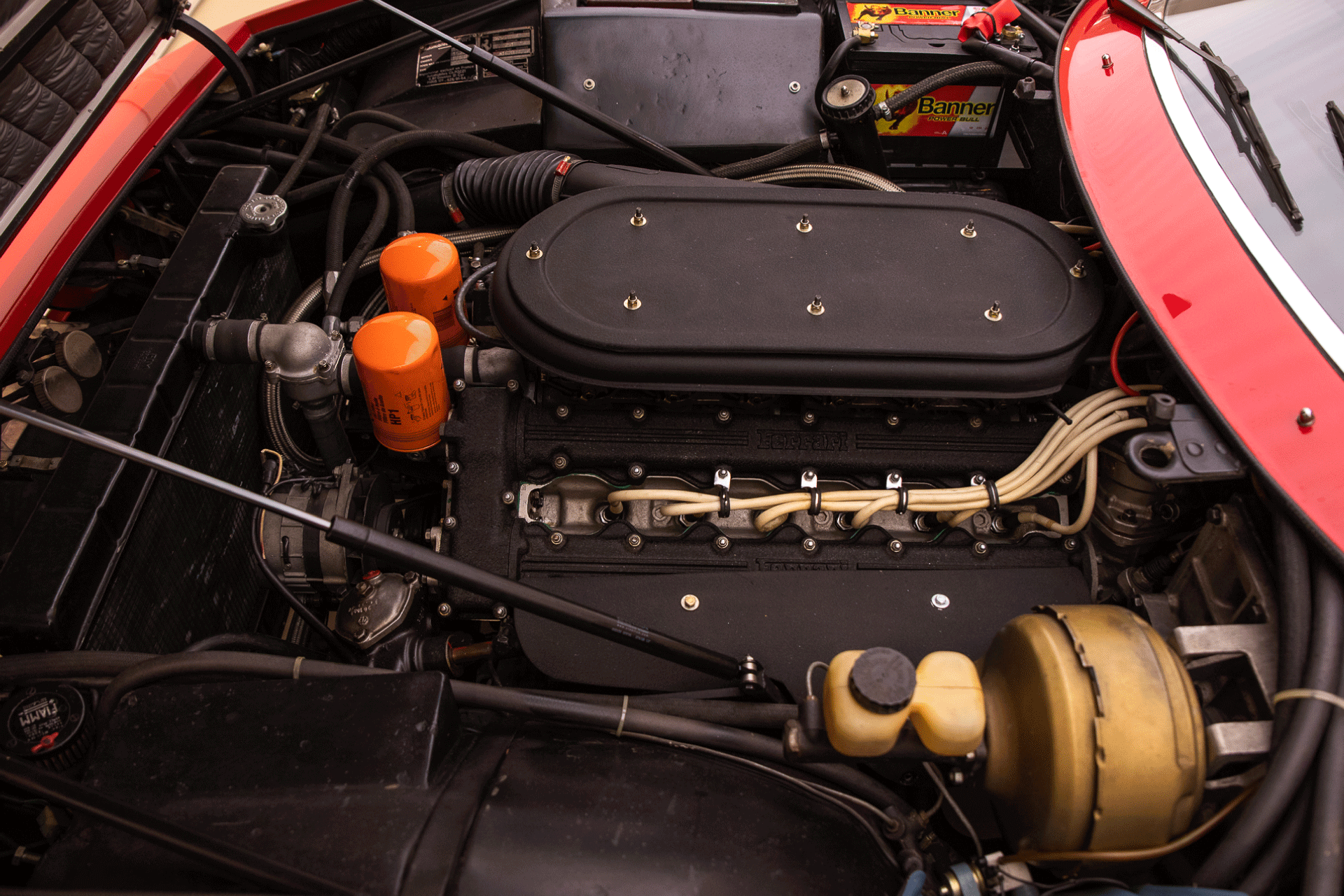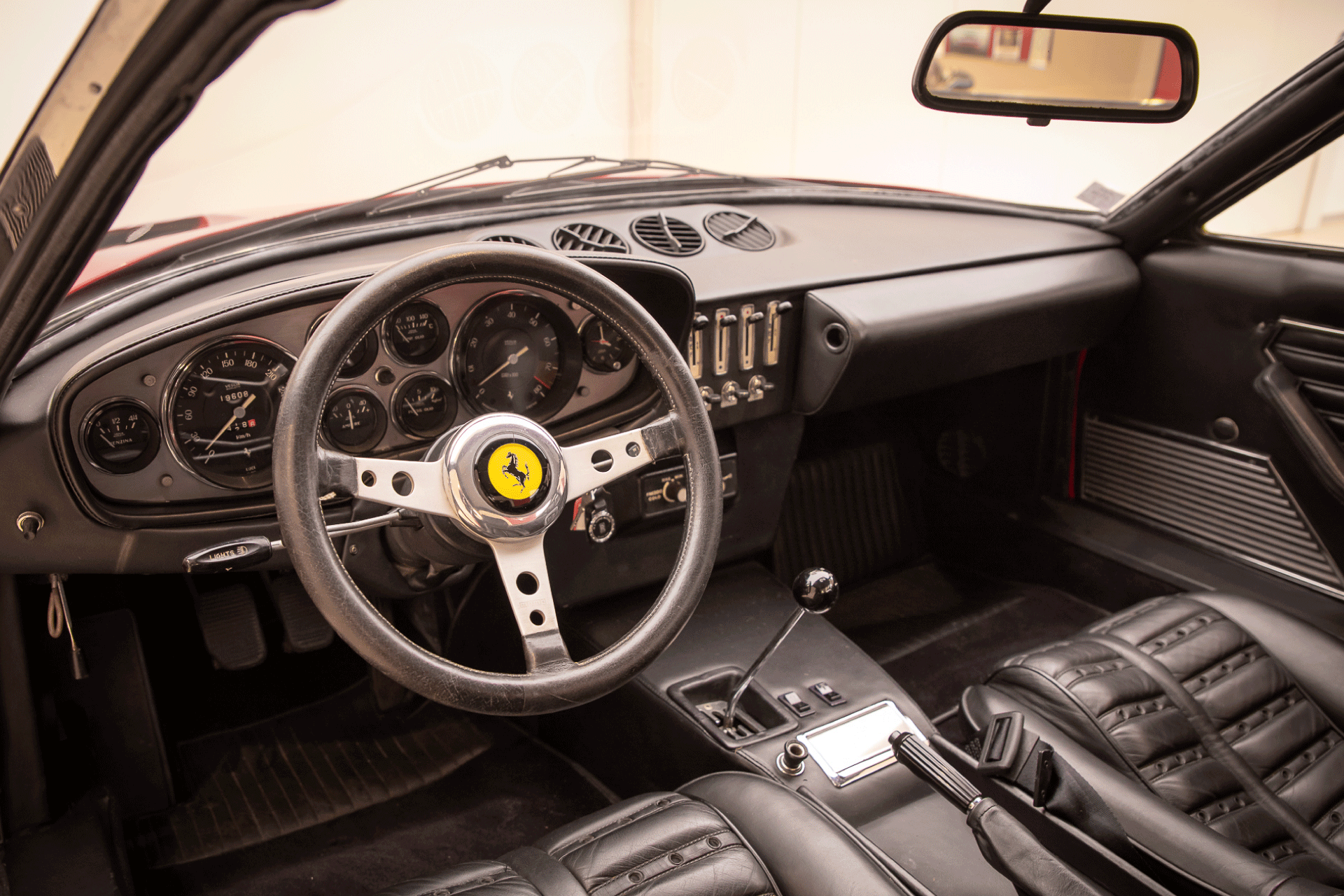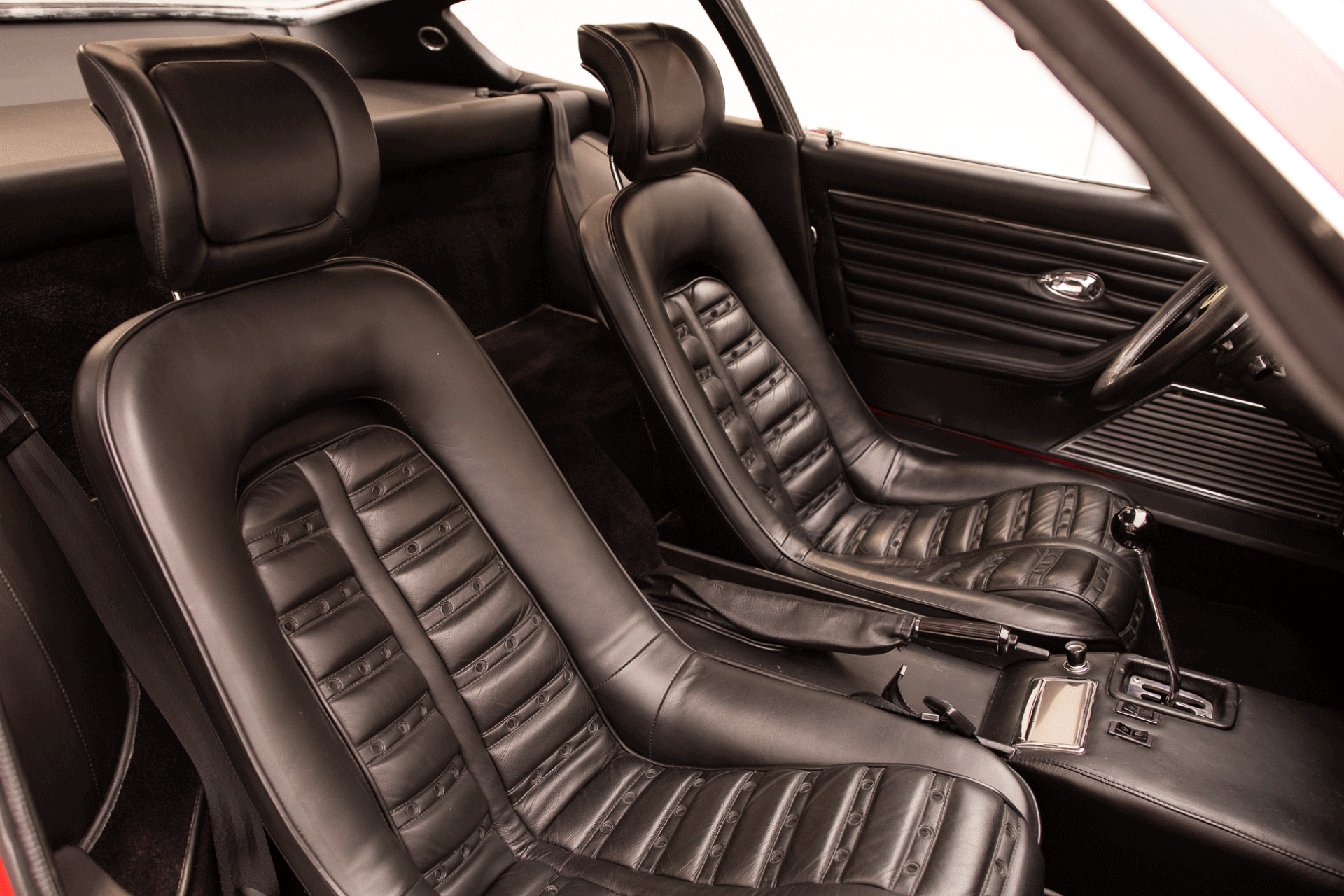Technical sheet
| Range | Daily driver range |
| Brand | Ferrari |
| Type | 365 GTB/4 |
| Body | Coupé 2 places |
| Production | 1284 exemplaires |
| First print | 13/12/1972 |
| Body color | Rouge |
| Interior color | Cuir noir |
| Motor | 12 Cylindres, 6 carburateurs |
| Displacement | 4390 cm2 |
| Powerful | 352 ch DIN |
| Gearboxe | Mécanique à 5 rapports |
| Dimensions | L : 4,42m - l : 1,76m |
| Options | |
| Features | Modèle rare livré neuf en France |
| Mileage | 19 600 km compteur |
| Guarantee | 12 mois |
| Price | 730 000 € |
Description
FERRARI 365 GTB/4
The Ferrari 365 GTB/4 was presented at the 1968 Paris Motor Show. It replaced the 275 GTB, keeping the famous V12 ”Columbo” engine but increasing its displacement to 4.4 (4390 cm3), that is to say 365 cm3 per cylinder, hence its name. This engine, fed by six Weber carburettors, developed 352 bhp, enabling it to reach 280 km/h and to cover 1000 metres in 24 seconds. Its efficient handling and excellent balance were due to a good weight distribution. Its design set it apart from its competitors by the front position of the engine and the rear position of the gearbox. Its independent suspension allowed it to exploit its power to the full and gave it outstanding road holding. The first versions were equipped with headlights placed behind an acrylic window. In 1971, in accordance with new American standards, this front end was replaced by lights under folding covers. The overseas versions also had a reduced compression ratio and a modified exhaust system.
The lines of this car were superb and true to the spirit of the brand. They were the work of Leonardo Fioravanti, designer at Pininfarina. However, only the first example left his workshop. Production was carried out by the coachbuilder Scaglietti. It was the press that gave the 365 GTB/4 the name Daytona. This was a nod to the Italian manufacturer’s victory in the 24 Hours of Daytona in February 1967. Two 330s and a 412 were in the lead at the finish line.
From 1969, the 364 GTB/4 began its racing career. A first model, in aluminium, was designed for the 24 Hours of Le Mans. Unfortunately, the car was run off the road during testing, which stopped its participation in the event. At the end of 1970, Ferrari returned to racing. Three series of five cars were produced in succession. The first one was quite close to the original model. The bodywork was in aluminium and the original mechanics were retained. The glass in the side windows was replaced by Plexiglas. The second one kept only the bonnet, the boot and the aluminium doors. The wheel arches were widened to accommodate larger tyres. Adjustments were made to the engine to increase its power to 400 hp. The third series retained only the aluminium boot and bonnet. Power was increased to 450 hp. These features made it a favourite in motor racing. However, no driver belonged to Ferrari. All were privateers.
Some of the trophies include fifth place overall at Le Mans in 1971, five first places in GT and second place overall at the Daytona 24 Hours in 1979, five years after production ended in 1973, when it was replaced by the mid-engined Berlinette 365 GT/4. Only 1,284 of the ‘Daytona’ were produced as a coupe and 122 as a convertible.
In the 1980s, some of the berlinettes had their roofs planed down to make them convertibles. Resin copies were also produced on a Chevrolet Corvette basis. This was the case for the model in the American series Miami Vice, which angered Ferrari. Ferrari had the car removed from the set and offered the producer two real Testarossas. The ‘Daytona’ has become a myth. In 2004 it was voted the best sports car of the 1970s. Its qualities, history and rarity have gradually increased its value and made it very popular with collectors around the world.
The proposed model.
The example presented was delivered new in France on 13 December 1972. Its technical characteristics are therefore European. The Ferrari red bodywork and black leather interior are classics of the time. It is a “real” Ferrari. This car has always remained in Europe. It has been preserved and maintained as it should be. Its last owner, a collector of prestigious cars, has had it for several years. It runs as you would expect from such a car. To acquire it is to own a myth of the transalpine manufacturer. It is also an investment in a beautiful object with an elegance and nobility that is recognised by enthusiasts of the brand.
Financing solution :
Classic Credit
For a vehicle of730000 € Bring146000 € Amount Borrowed € Durée month Duration € Total cost of credit € Of which administrative fees € Of which interest € Fixed borrowing rate % Fixed TAEG % Total amount due €
Visualize this credit with a representative example.
For a purchase of 730000€ with a contribution of 146000€ and an accessory credit for a sale of € over months at the Fixed Global Effective Annual Rate of %, (fixed borrowing rate: %) you will repay monthly installments of € , interest: €, administrative costs: €.
Total amount due: €
The monthly cost of the optional Death, Total and Irreversible Loss of Autonomy, Total Temporary Incapacity for Work insurance (taken out with Cardif Assurance Vie – S.A with capital of €719,167,488 - 732 028 154 RCS Paris and Cardif Assurances Risques Divers – S.A with capital of €21,602,240 - 308 896 547 RCS Paris - Head office 1, Bd Haussmann 75009 Paris. Companies governed by the insurance code) is € and can be added to the amount of the monthly payment. The total cost of this optional insurance is €. The Effective Annual Rate of this insurance is: %. Details of the conditions and limits of guarantee available in the manual on request.
Offer for a purchase and an accessory loan to a sale from €6,000 borrowed repayable over a period of 25 months to 72 months for the purchase of a used vehicle less than 30 years old and over a period of 25 months to 144 months for the purchase of a used vehicle over 30 years old. Fixed Global Effective Annual Rate : %. Subject to acceptance of the file by BNP Paribas Personal Finance, credit institution: 1 bd Haussmann 75 009 Paris, SA with capital of €561,882,202, 542 097 902 RCS Paris, N°ORIAS: 07 023 128 (www.orias .Fr).
You have a right of withdrawal.
Cetelem is a brand of BNP Paribas Personal Finance. Conditions in force at 27 July 2024

